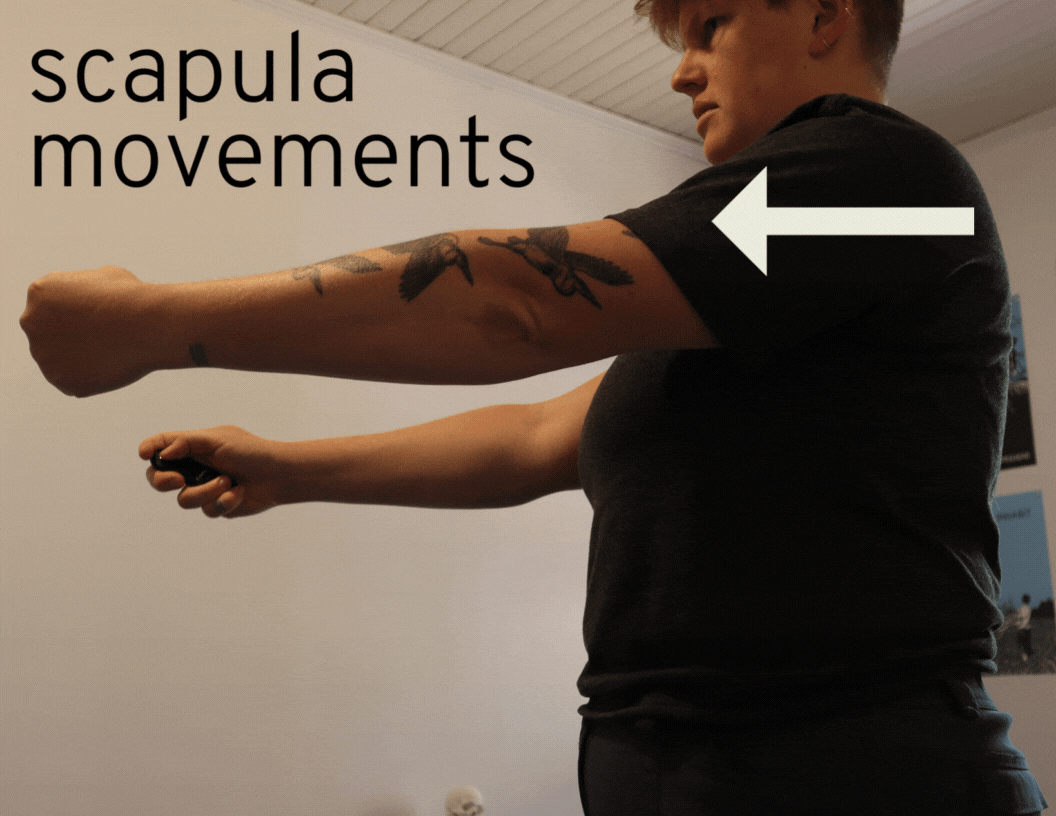
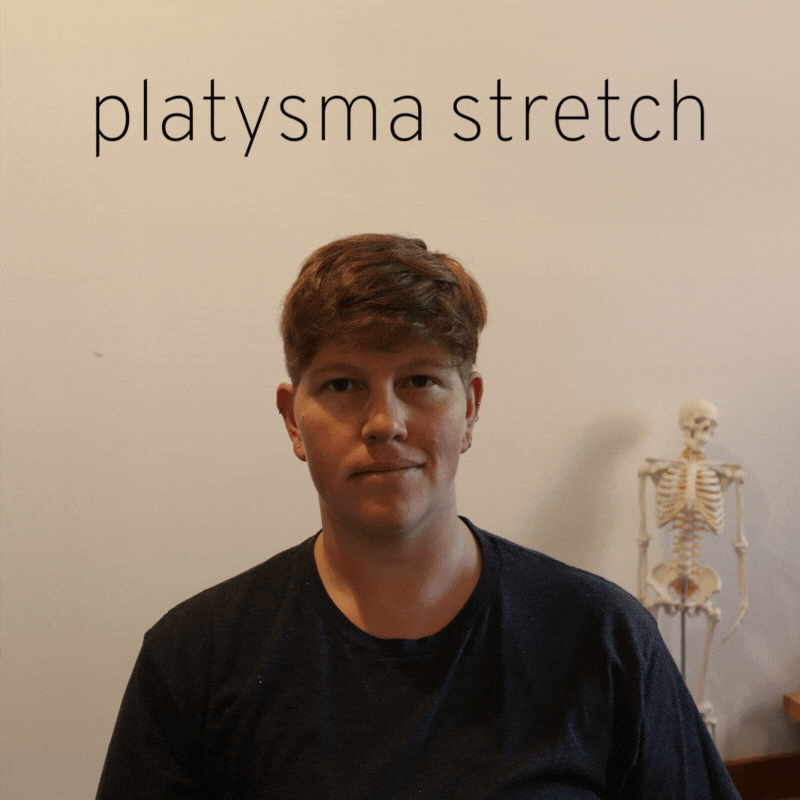
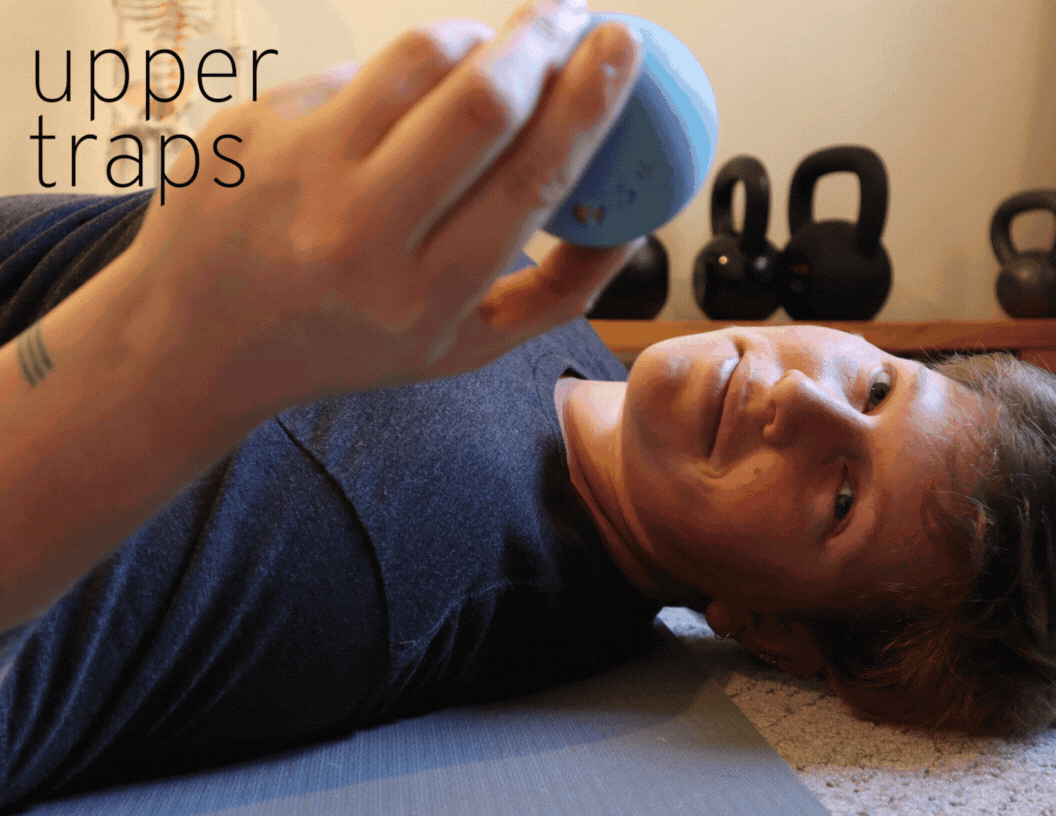
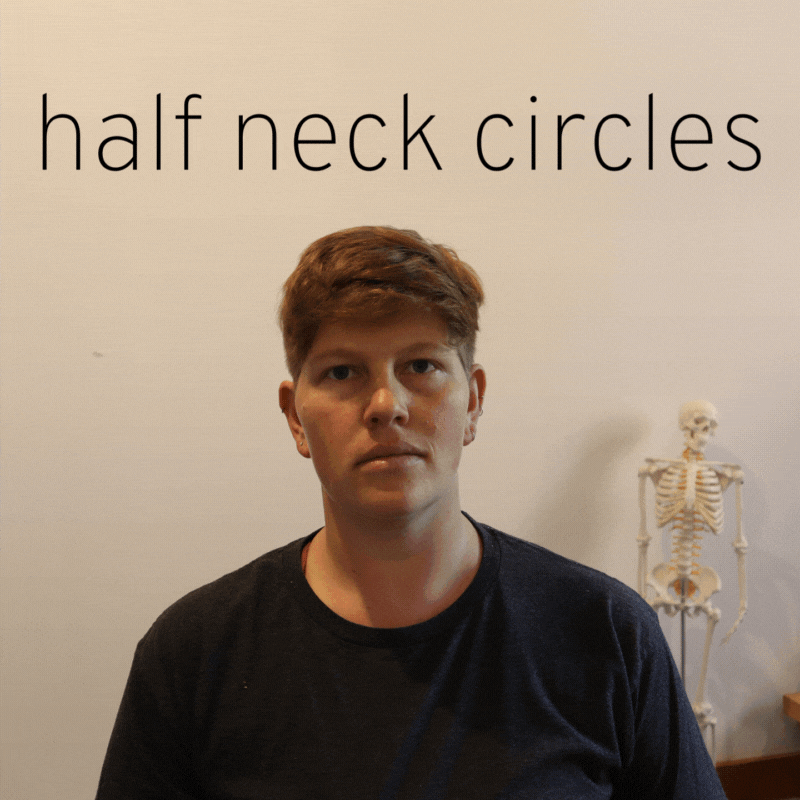
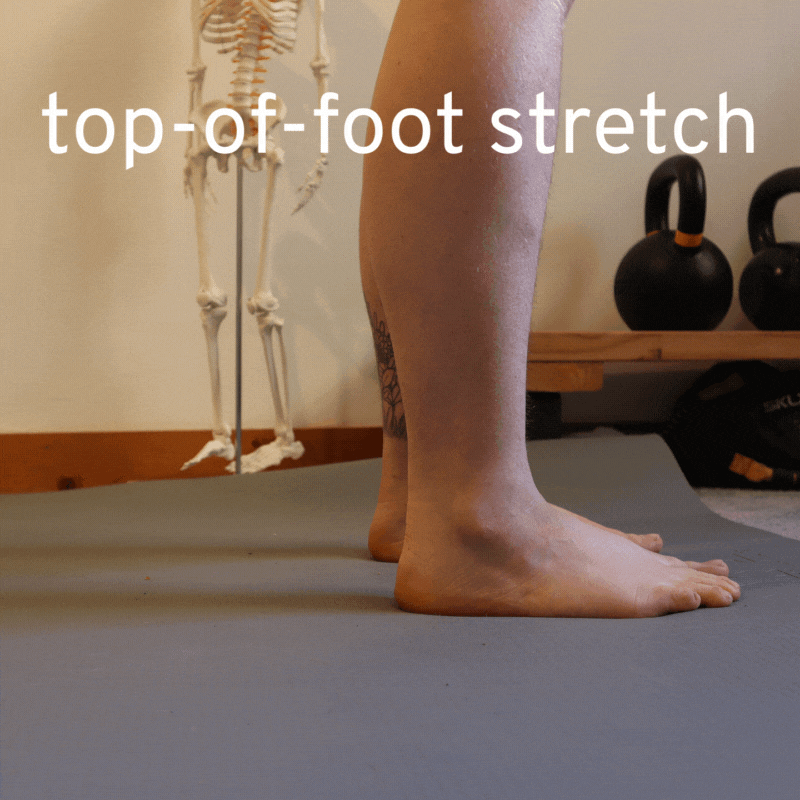
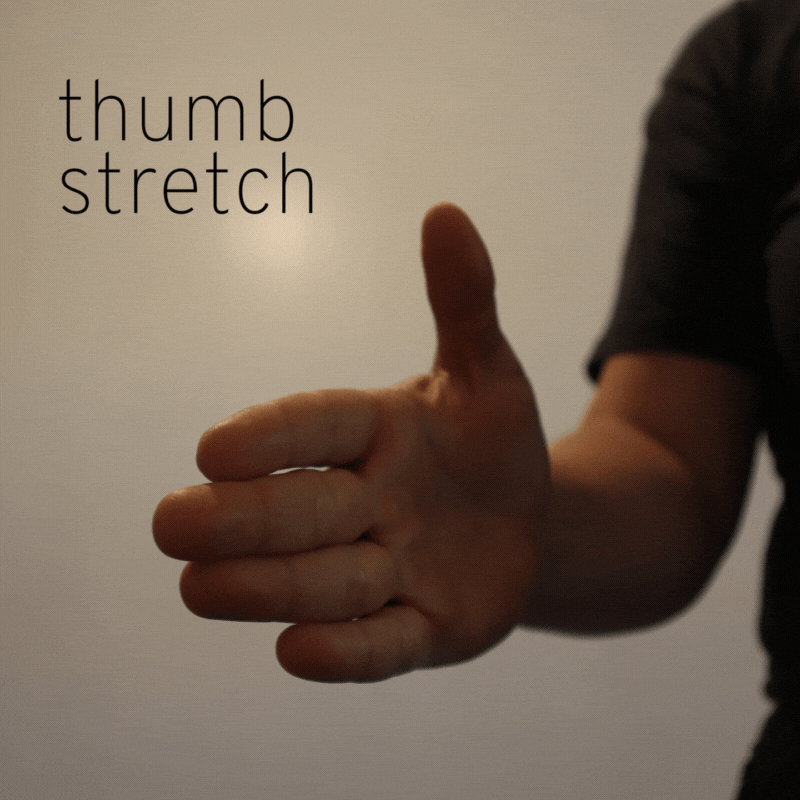
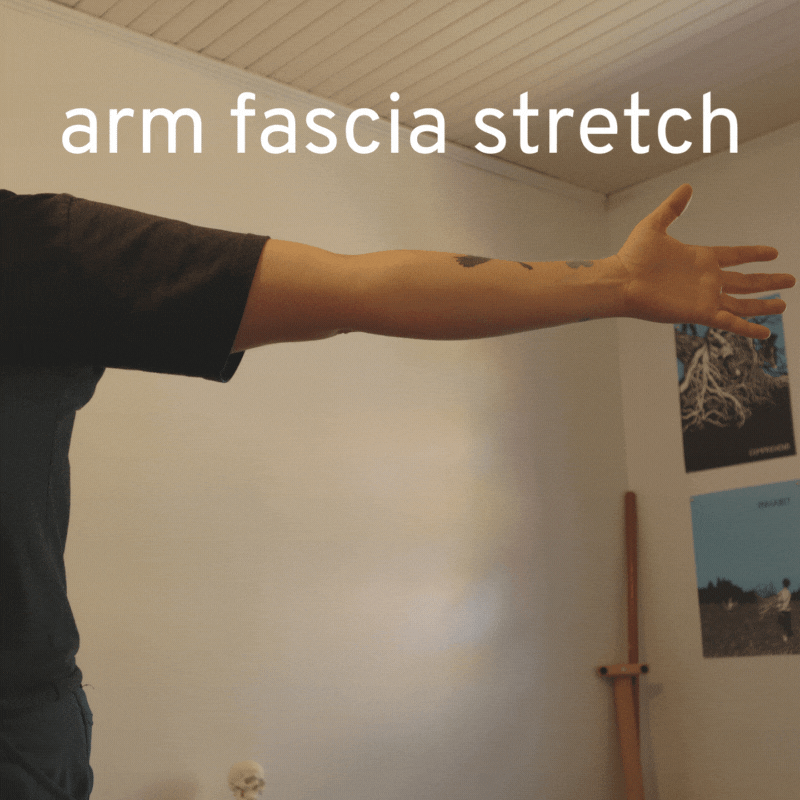
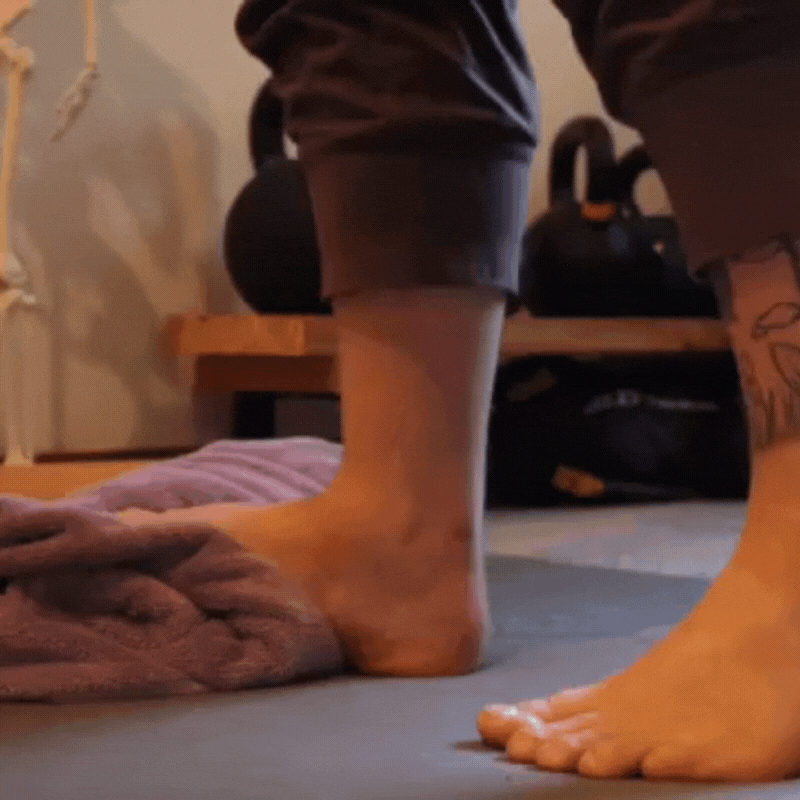
full body
Self-massage
Stress relief/vagus nerve exercises (Jill Miller)
Movement, stretching, mobility
Gentle pilates flow in bed (Requisite Pilates)
Half full body circles (Elaine D.)
Simple exercises to make floor sitting easier (Katy Bowman) 18min
face, neck, head
Self-massage
Suboccipitals (Jae)
Jaw and face - Seated (Jae)
Jaw and face - Laying (Jae)
Massage ball techniques for a stiff neck (Jill Miller)
Movement, stretching, mobility
shoulders, arms,
upper back
Self-massage
upper traps laying down (Jae)
upper traps against the wall (whealth)
Hands (Jae)
Forearms - at the wall (Jae)
Massage ball techniques for tense shoulders (Jill Miller)
Movement, stretching, mobility
Hand and wrist break (Jae)
Rib release for better breath (Requisite Pilates)
Explore your shoulders (Katy Bowman) 56min
Gentle exercises for stiff wrists and hands (Katy Bowman) 2min
Can’t get enough shoulders (Katy Bowman) 35m
low back,
hips, glutes
Self-massage
Low back on the floor (Jae)
Global shear for the hip and leg (Jae) 1min
Massage ball techniques for hips and glutes (Jill Miller)
Massage ball techniques for low back (Jill Miller)
Movement, stretching, mobility
Gentle back mobility series (Whealth) 3min
Pelvic walks (Elaine D.) 1min
Pelvic Lists (Katy Bowman) 5min
Restore the hips (Elaine D.) 29min
Low Back Care for Travel (Katy Bowman) 22min
Finding your butt (Katy Bowman) 56min
legs, knees,
ankles, feet
Self-massage
15 min pre/post walk (Jae)
Feet - quick (Jae)
Massage ball techniques for feet (Jill Miller)
Shins (Jae)
Movement, stretching, mobility
Top of foot stretch (Katy Bowman)
Hello hamstrings, and other leg muscles (Katy Bowman) 51min
post-surgery
Thanks to Holly “Ollie” Ledbetter, LMT, CMLDT (they/them) and Jo Elliott Gutierrez, LMT, CMLD (they/them) for these resources!
Trans-specific Resources
Self manual lymphatic drainage (MLD) for post facial feminization surgery.
some of my fave resources
-
Trauma-informed, whole-person breath and movement coach
Vimeo and Website
-
-
-
self-care & massage info and articles
-
Using self-massage tools to engage our tissues, we can provide effective, relaxing pain-relief & stress reduction at home.
Jae uses training in massage therapy, anatomy & physiology, and personal training to provide accessible and helpful guidance for self-massage as a part of your self-care
“Self-myofascial release (SMFR) is a tool for prehab and rehab using an object as a stress transfer-medium (STM). This self-directed form of care is a way to manage pain, improve movement, boost recovery, improve arterial function, and stimulate parasympathetic arousal. SMFR gives the user ability to apply their own therapeutic intervention for little, if any, cost.”
-Jill Miller, from Fascia, Function, and Medical Applications
-
reduce pain and soreness
connect to your body, including through balance and “proprioception”
improve ease of movement by addressing fascial restriction
encourage physiological relaxation (aka relaxation of your body and nervous system)
Increase circulation of blood and lymph
Sources: Tune Up Fitness, Roll Model Method book; Thomas Meyers articles and Fascia 101 video
-
By Heather Longoria
Click here to read full article
“Likely the reason “myofascial” gets so much attention, is because seekers of fascial therapies are often doing so related to muscular performance – to improve strength, improve flexibility and improve motor control. But what you must know is that ALL FASCIAS ARE CONNECTED. Even though we tend to want to separate and categorize in order to better understand the body, fascia doesn’t really work like that.
As David Lesondak explains “The most important thing to keep foremost in mind, at all times, is that the fascial net is one continuous structure throughout the body . . . as far as the body is concerned, the fascia is all one – one complex, holistic, self-regulating organ.”
“Self myofascial release/SMFR is a ticket to physiological relaxation, increased parasympathetic activity, and improved embodiment. This ties in to the discussion about proprioception above. But it also opens up another conversation into another subtle category of sensing our body’s implicit feelings called interoception. Interoception is our body’s physiological sense of itself, the many nerve endings that comprise this aspect of body sense are also embedded in our body’s fascia, but our brain processes the majority of these signals in its emotional processing centers.10 By stimulating all of those various nerve receptors while doing SMFR, your brain is getting a much clearer map of your body.
SMFR can also facilitate an improved awareness and emotional connection with the inner Self. When the human organism experiences trauma (which can include falls, car accidents, surgeries, and other more complex forms of trauma), and the trauma or “threat” is not processed successfully, the energy mobilized by the body to deal with the threat can get trapped in the body, causing constrictions and a host of other symptoms such as panic attacks, anxiety, difficulty sleeping, chronic fatigue, headaches, digestion challenges, neck and back problems, depression, forgetfulness, inability to deal with stress, etc.
Interoception can help humans be present and aware of the sensations, emotions, and feelings flowing through the body. Building this capacity to be present with what is happening in our “inner space” can help the body process the stuck energy mobilized by trauma. When practicing SMFR, give yourself permission to BE in your experience – to be curious, open, patient, to go s l o w. Notice how the pain experience changes with different thoughts, different movements, and different and novel experiences. Be open to witnessing your rage of emotions. Be a companion to the pain instead of fearing and resisting it.”
-
article by Suzanne Krowiak
Click here to read the full article
“Proprioception is dropping your feet on the floor when you get out of bed in the morning without having to look down; keeping your eyes on your laptop at work while you reach for your coffee without spilling it; switching your foot seamlessly from the gas pedal to the brake in the car without bending over to look at the floorboard. You don’t need to think about it, and you don’t need to see your arms, legs, or feet for any of it to occur without incident— it happens automatically, outside of your conscious thought. And though proprioception occurs on a subconscious level, there are things you can do consciously to assess your proprioceptive sense and identify ways to improve it.
Proprioception can be diminished for a number of different reasons, from aging to chronic pain to poor postural habits, leaving you at greater risk of falls or injury. The good news is that there are simple, practical things you can do to develop and strengthen it, enabling you to move and feel better in your own body. But first, what is proprioception?”
-

